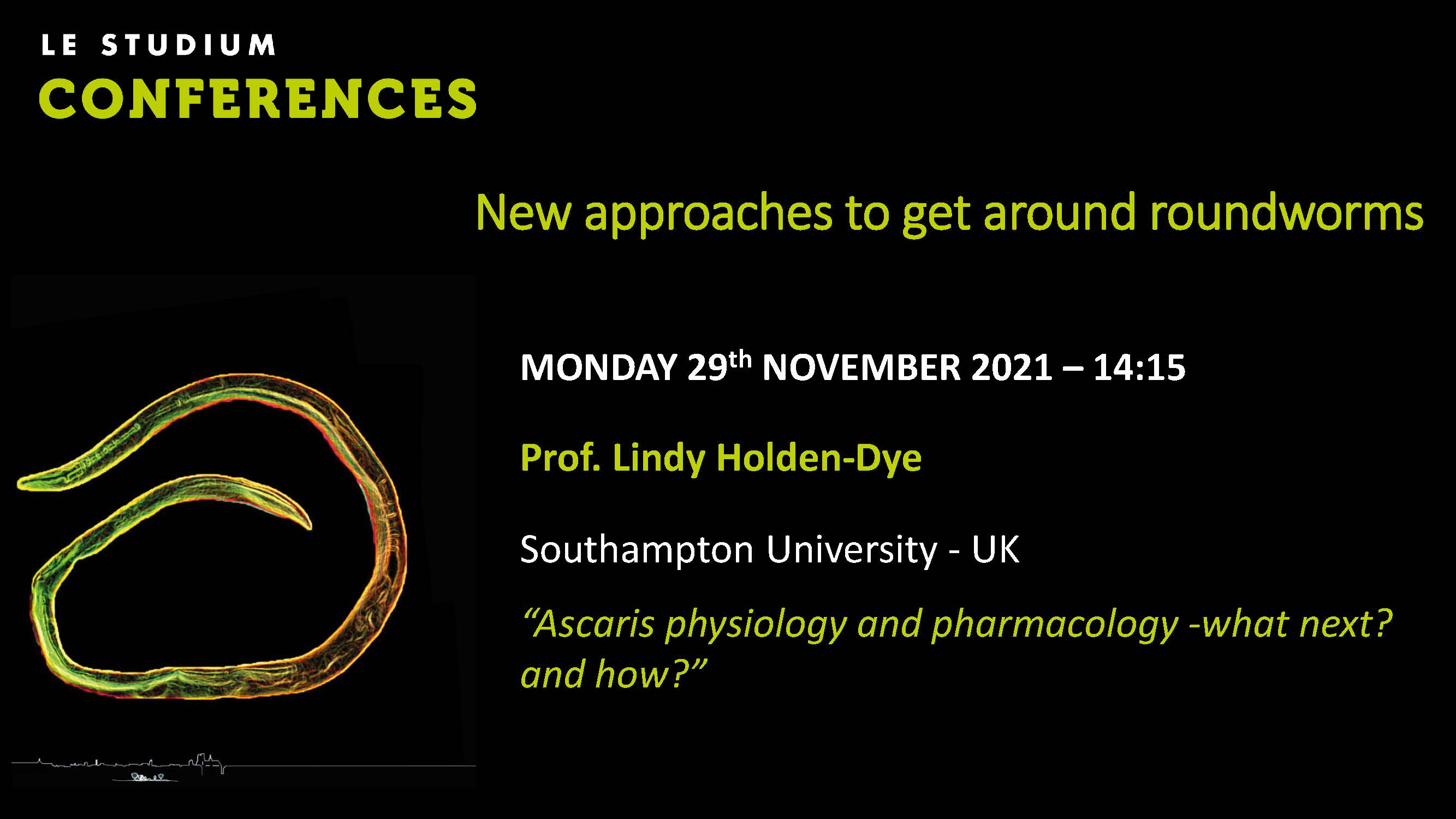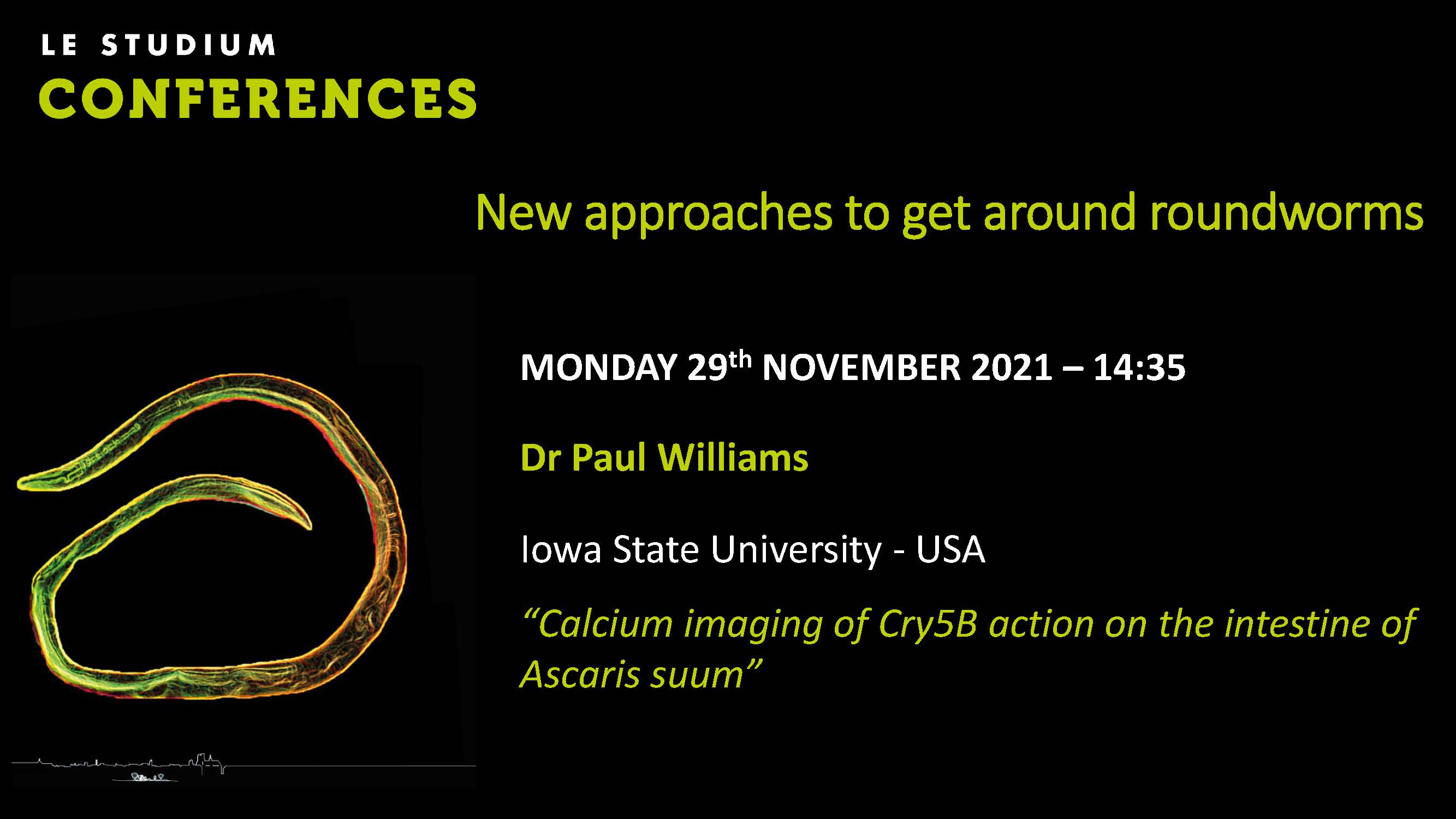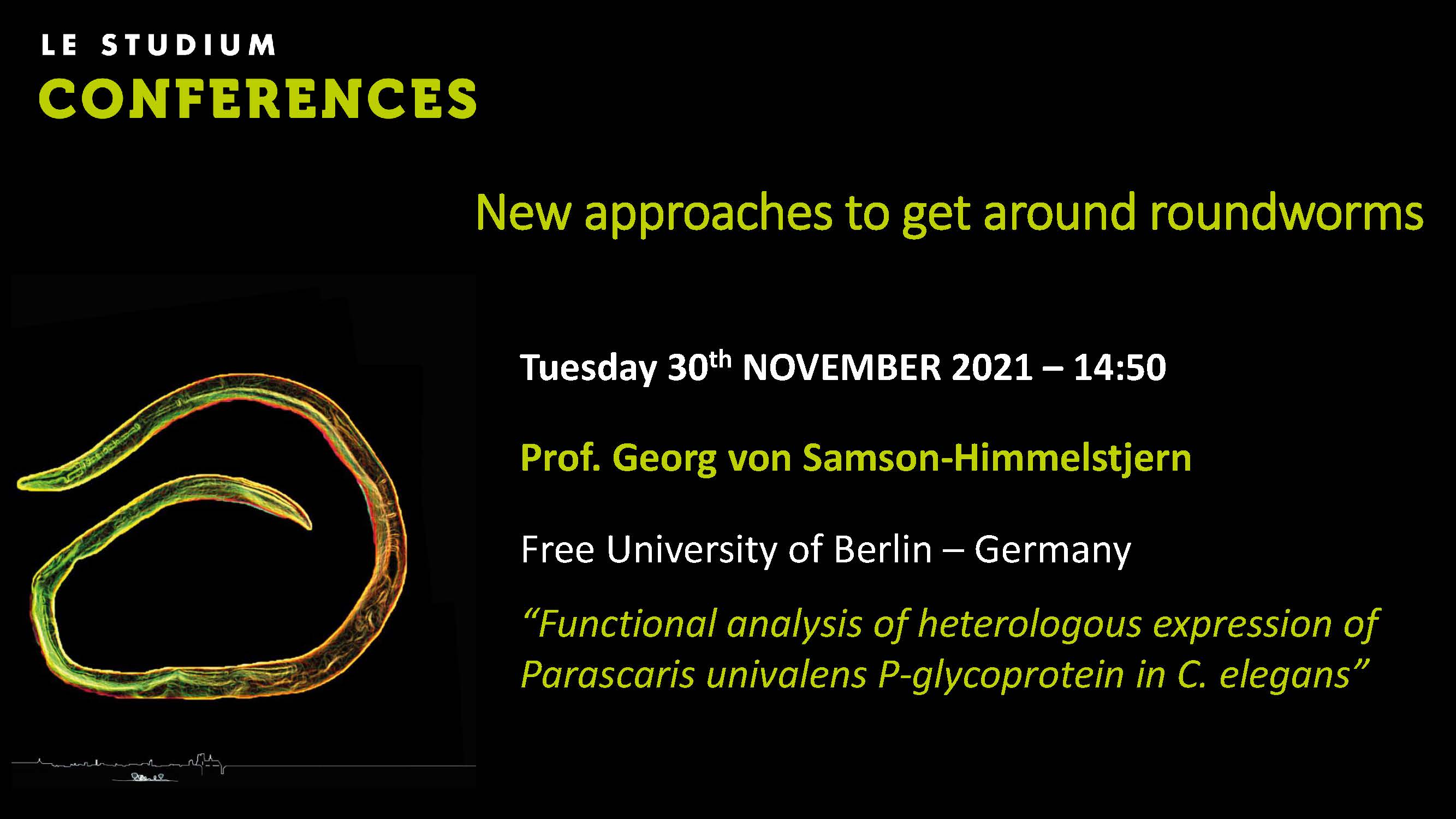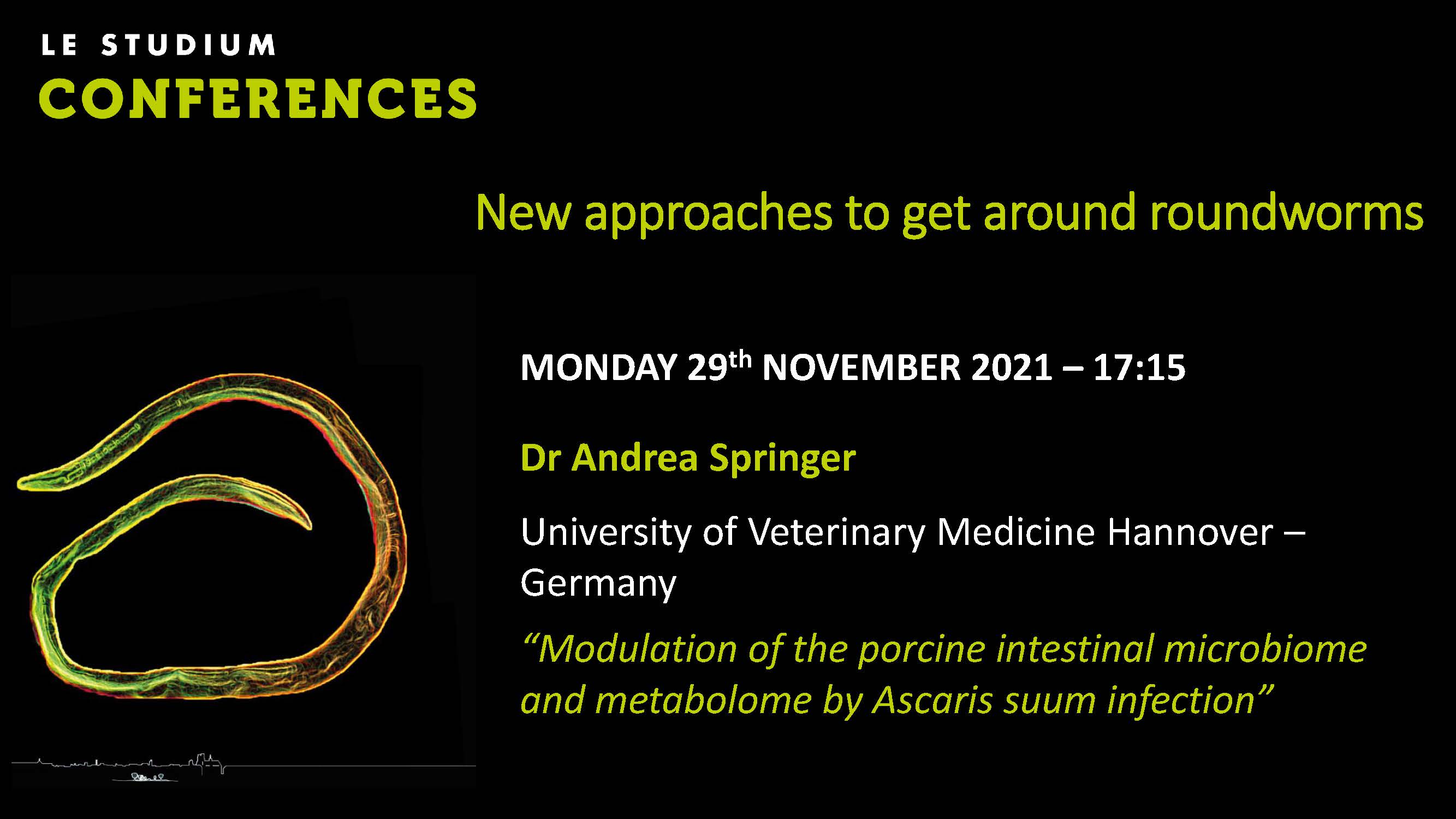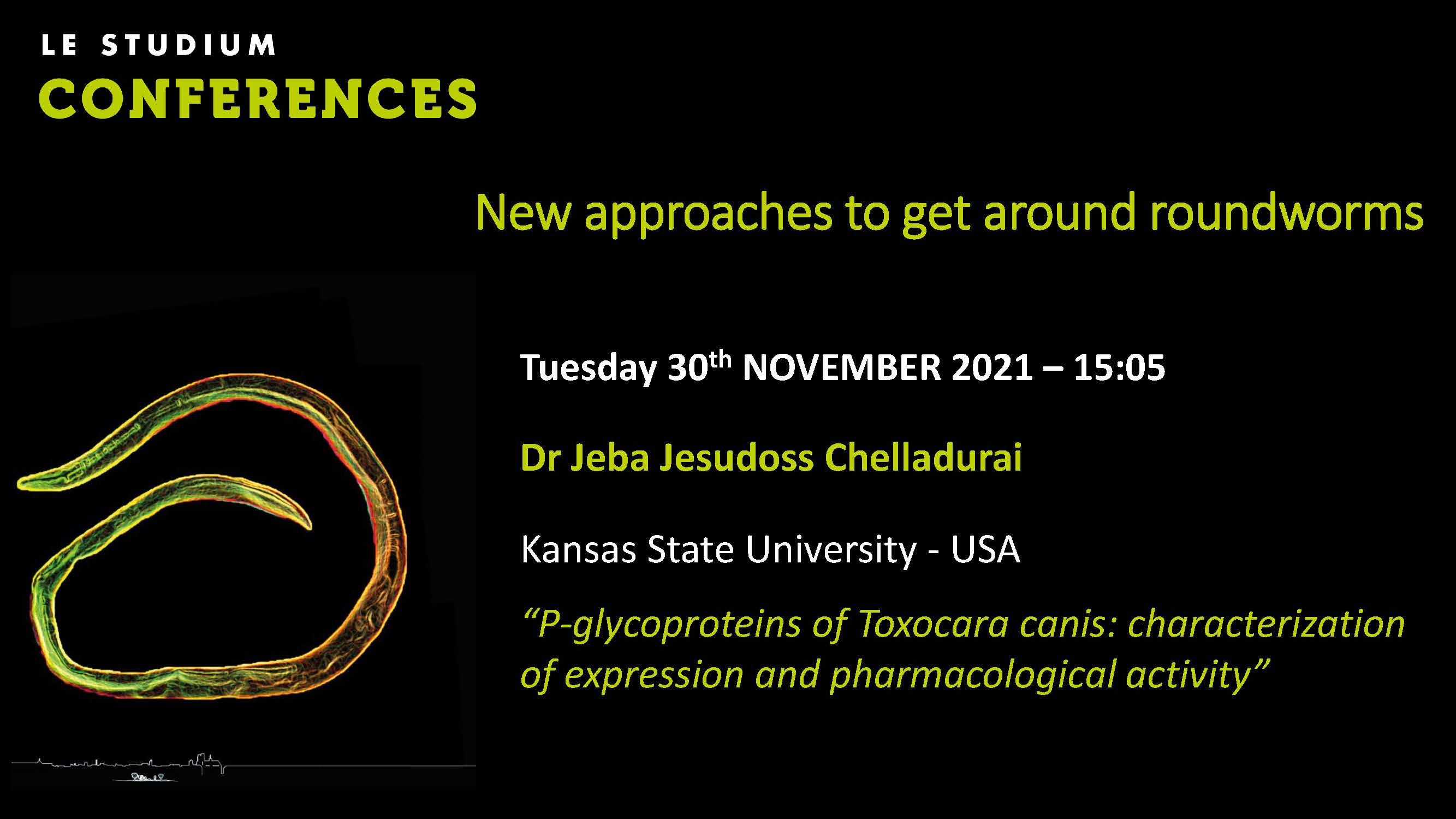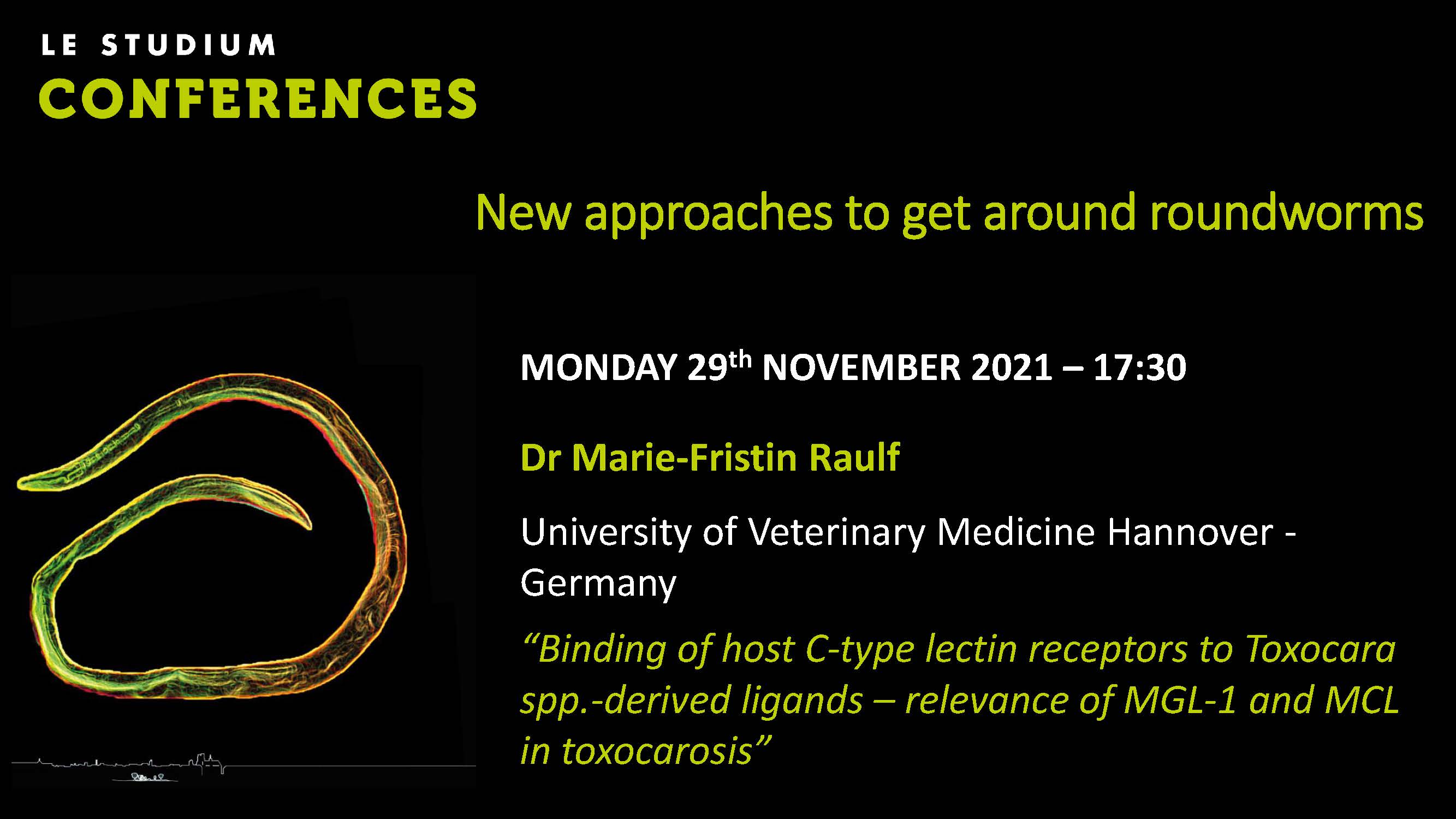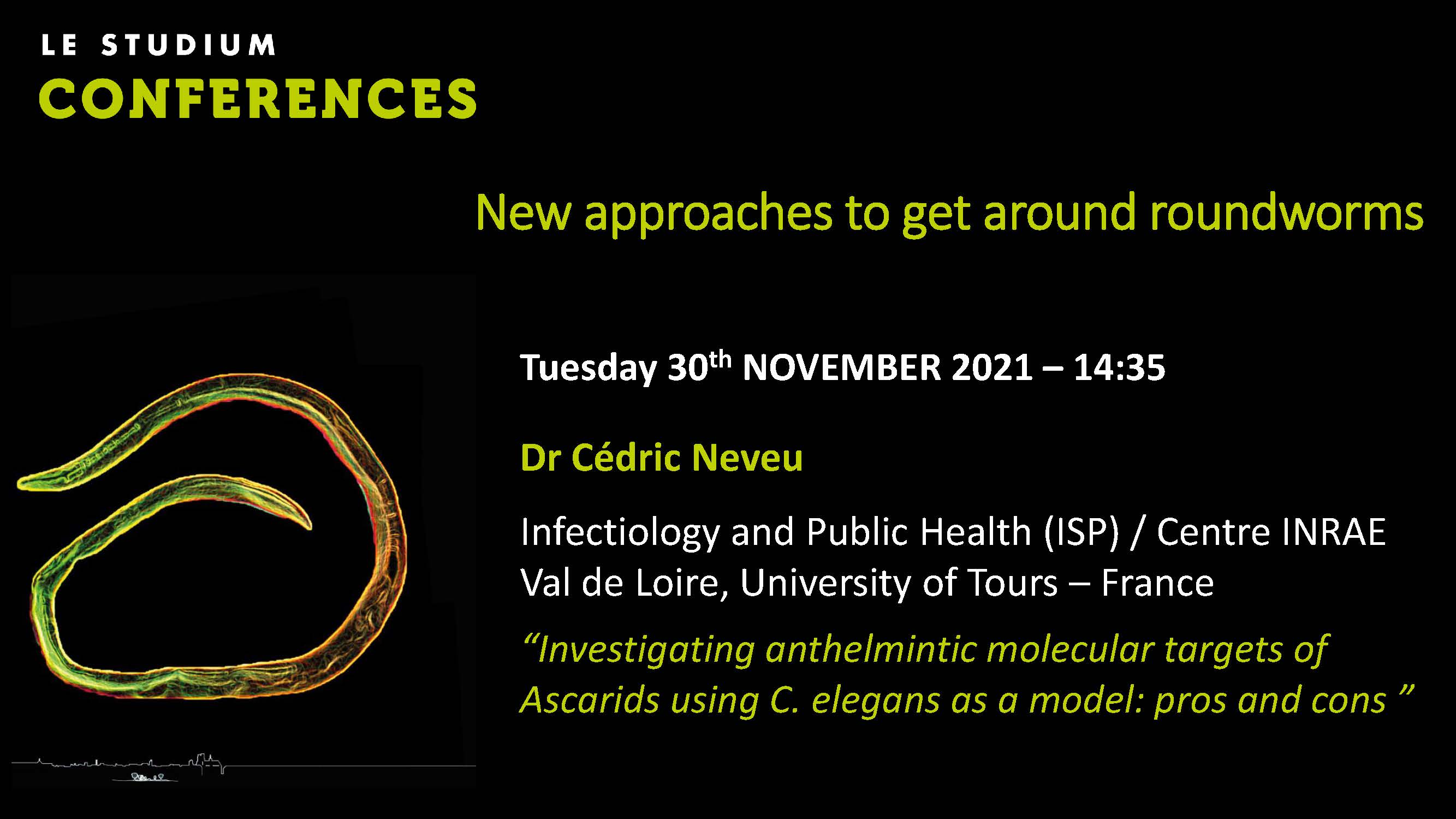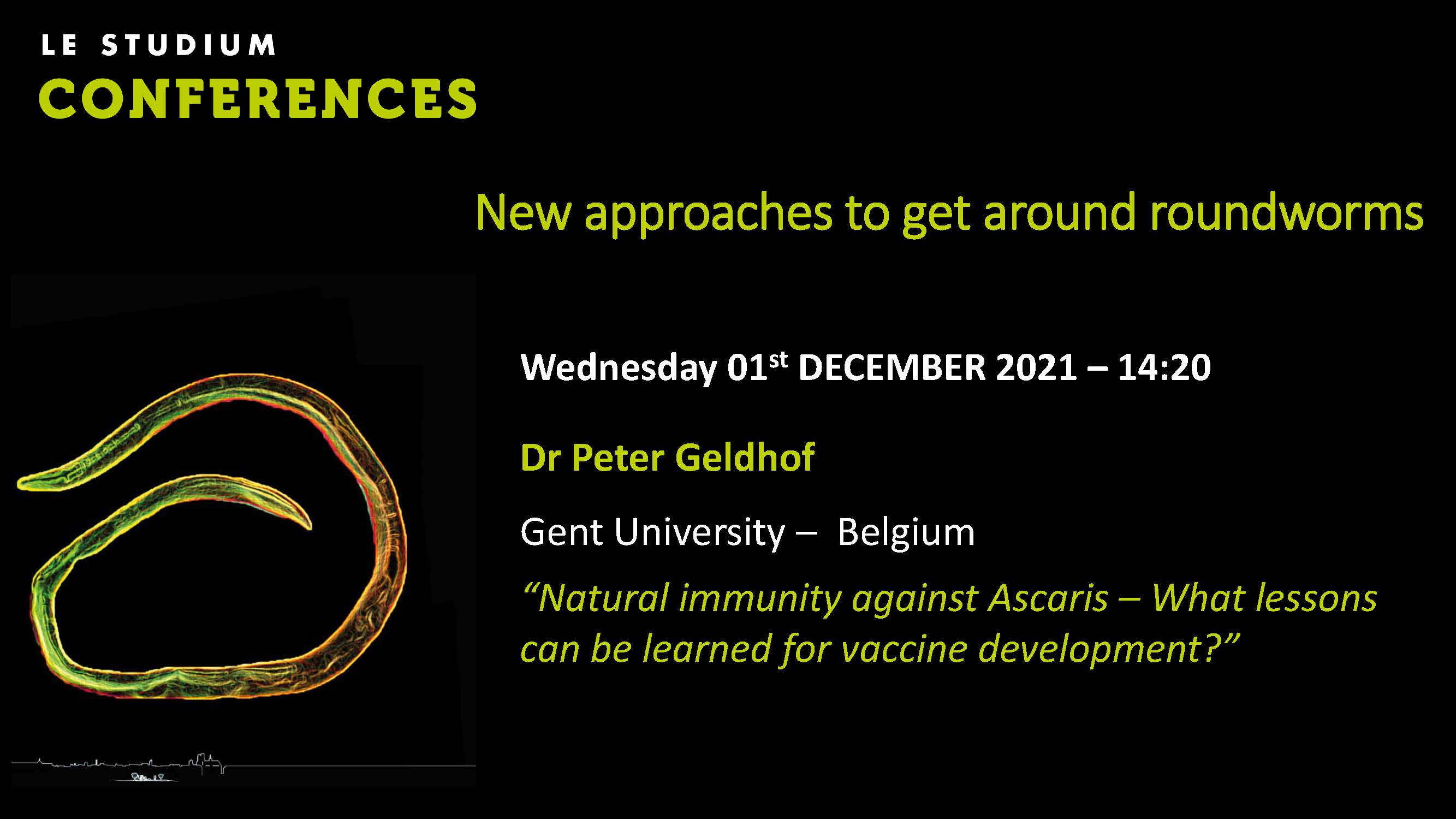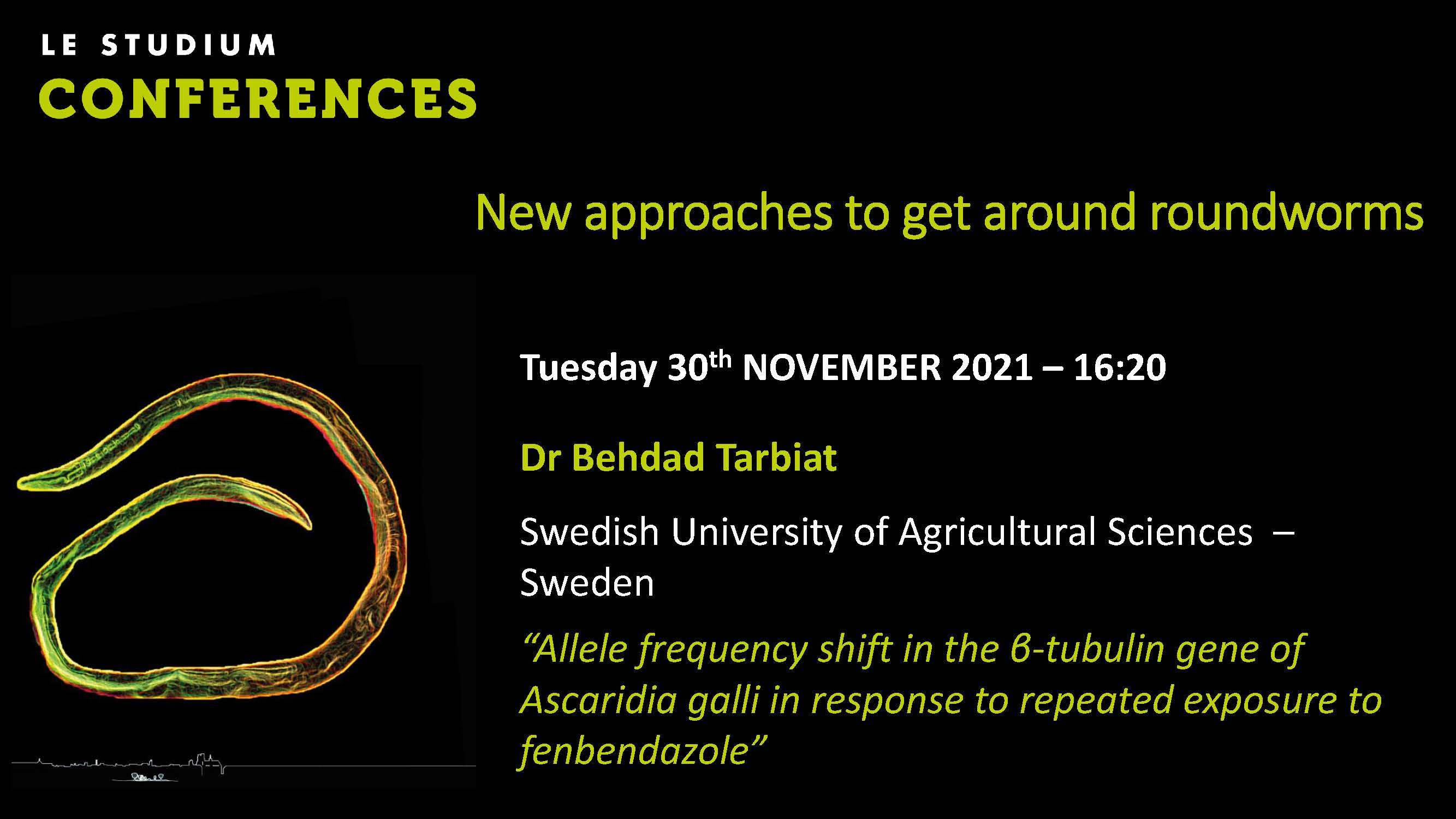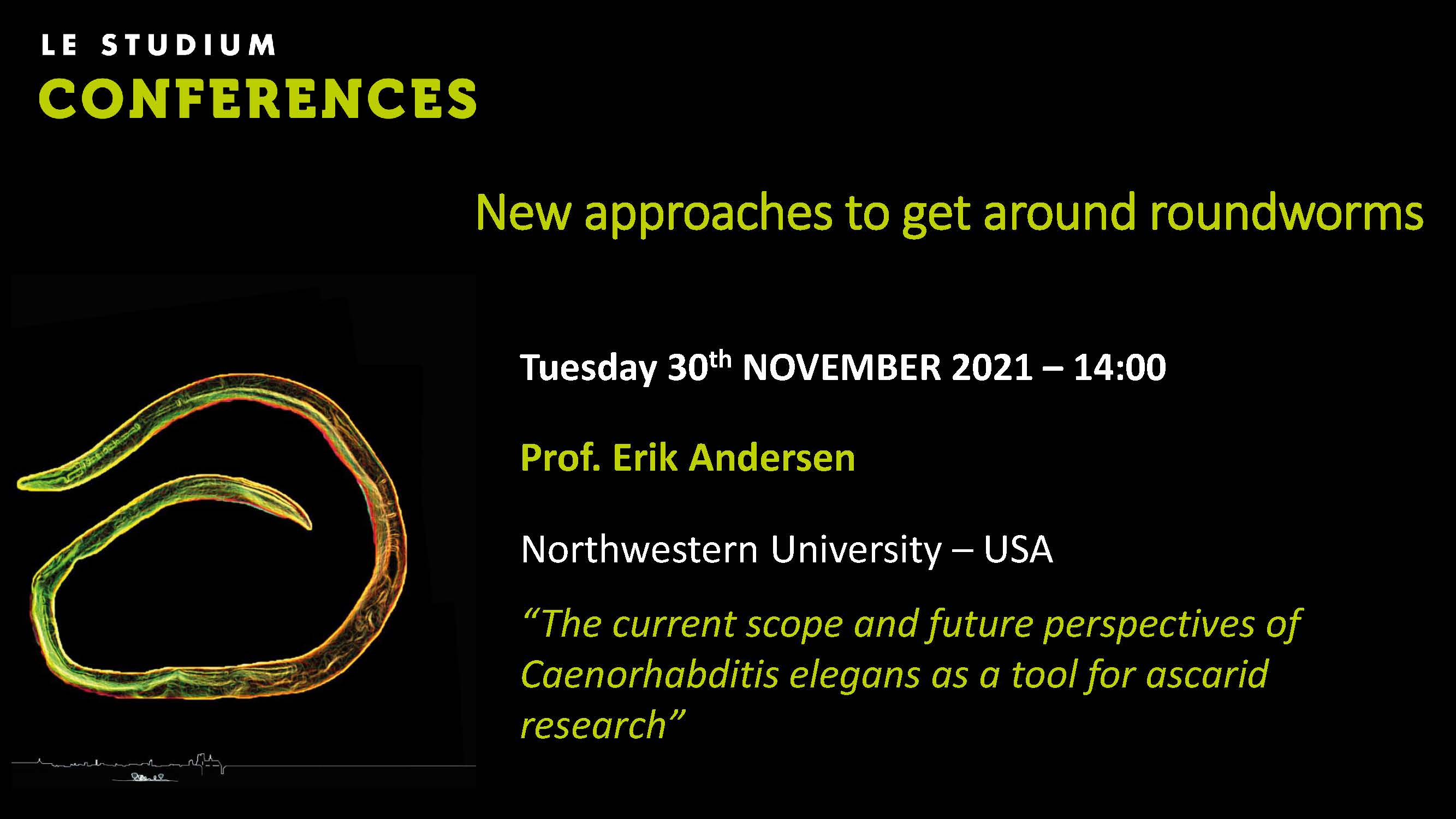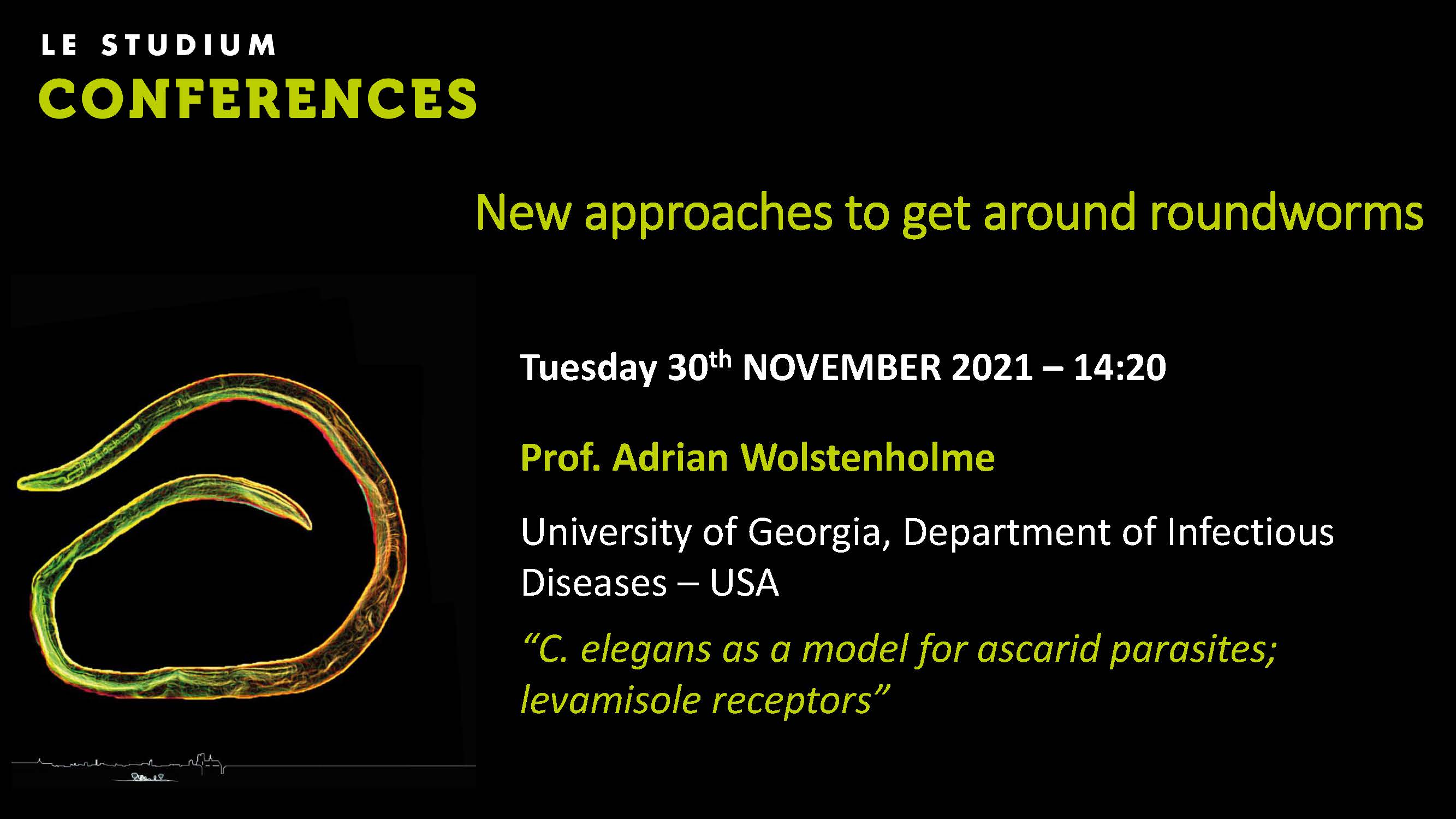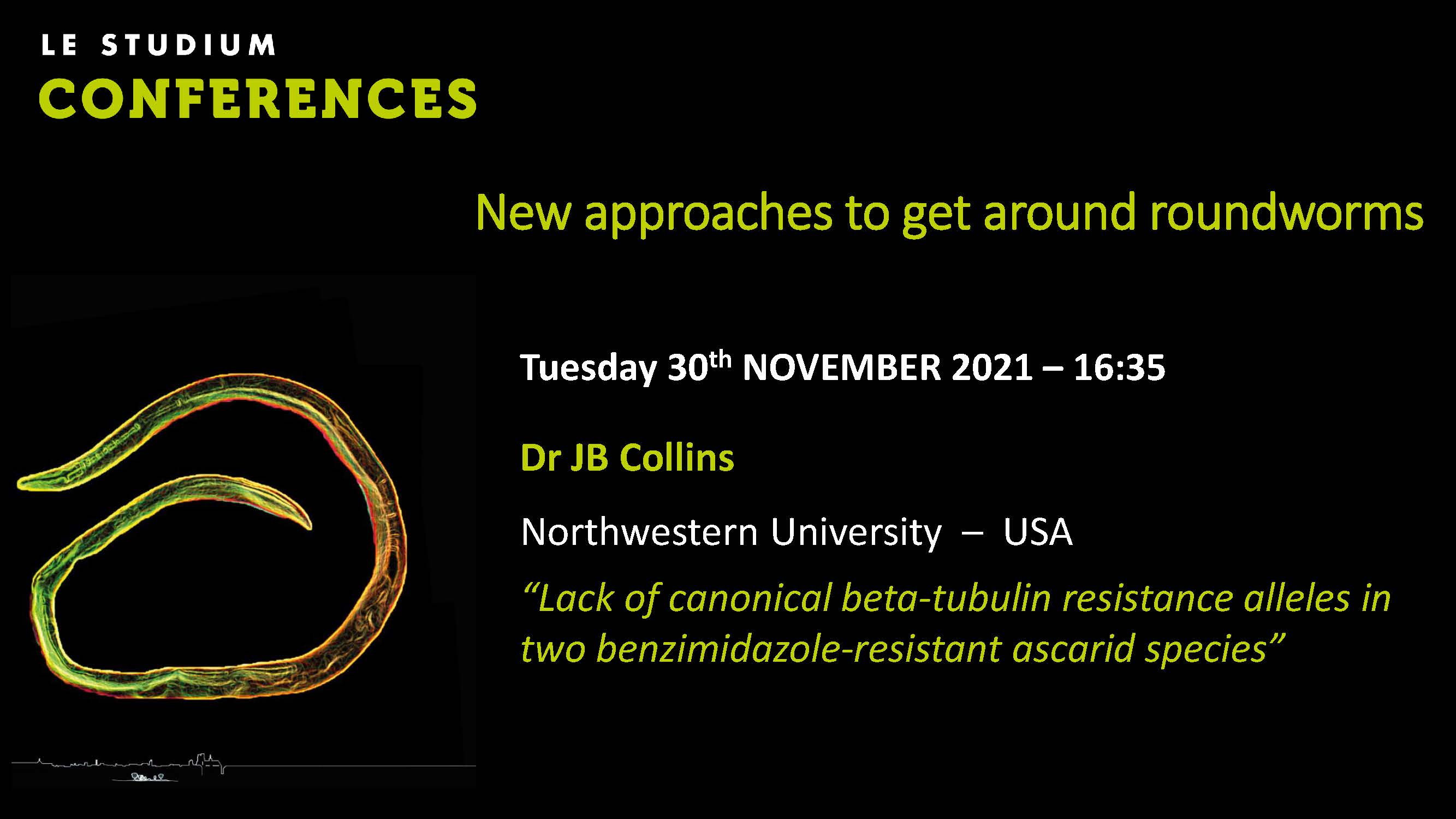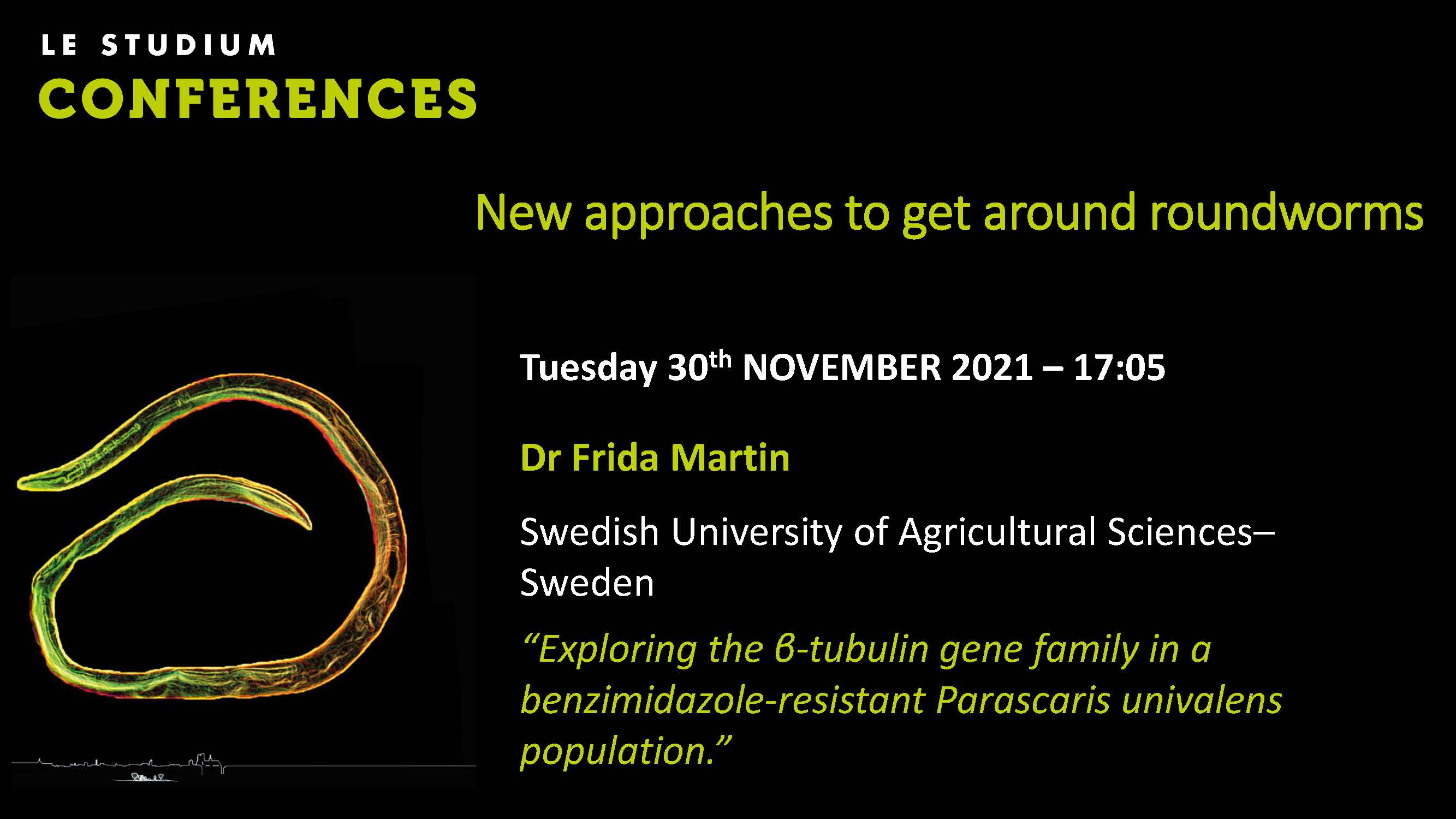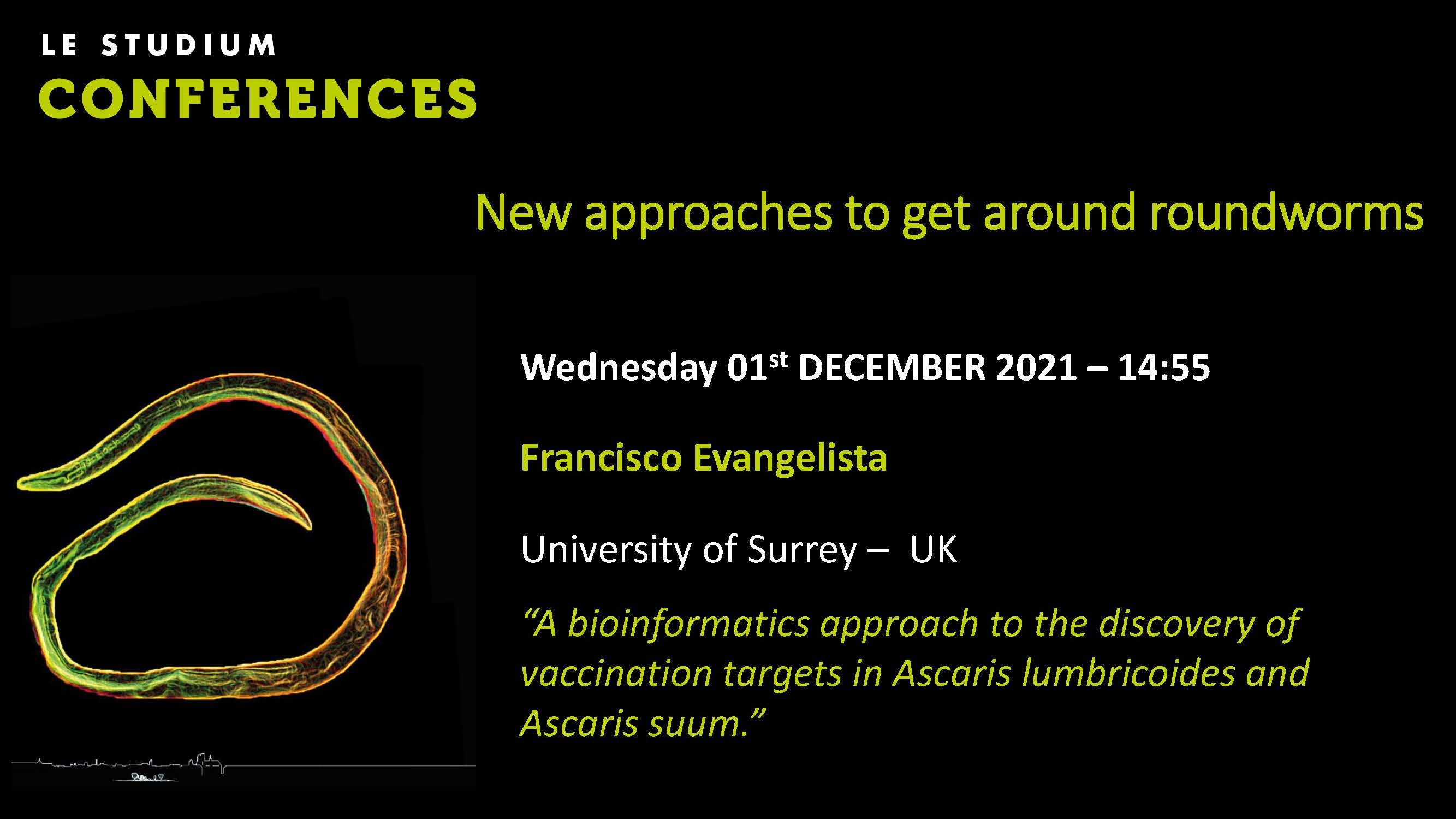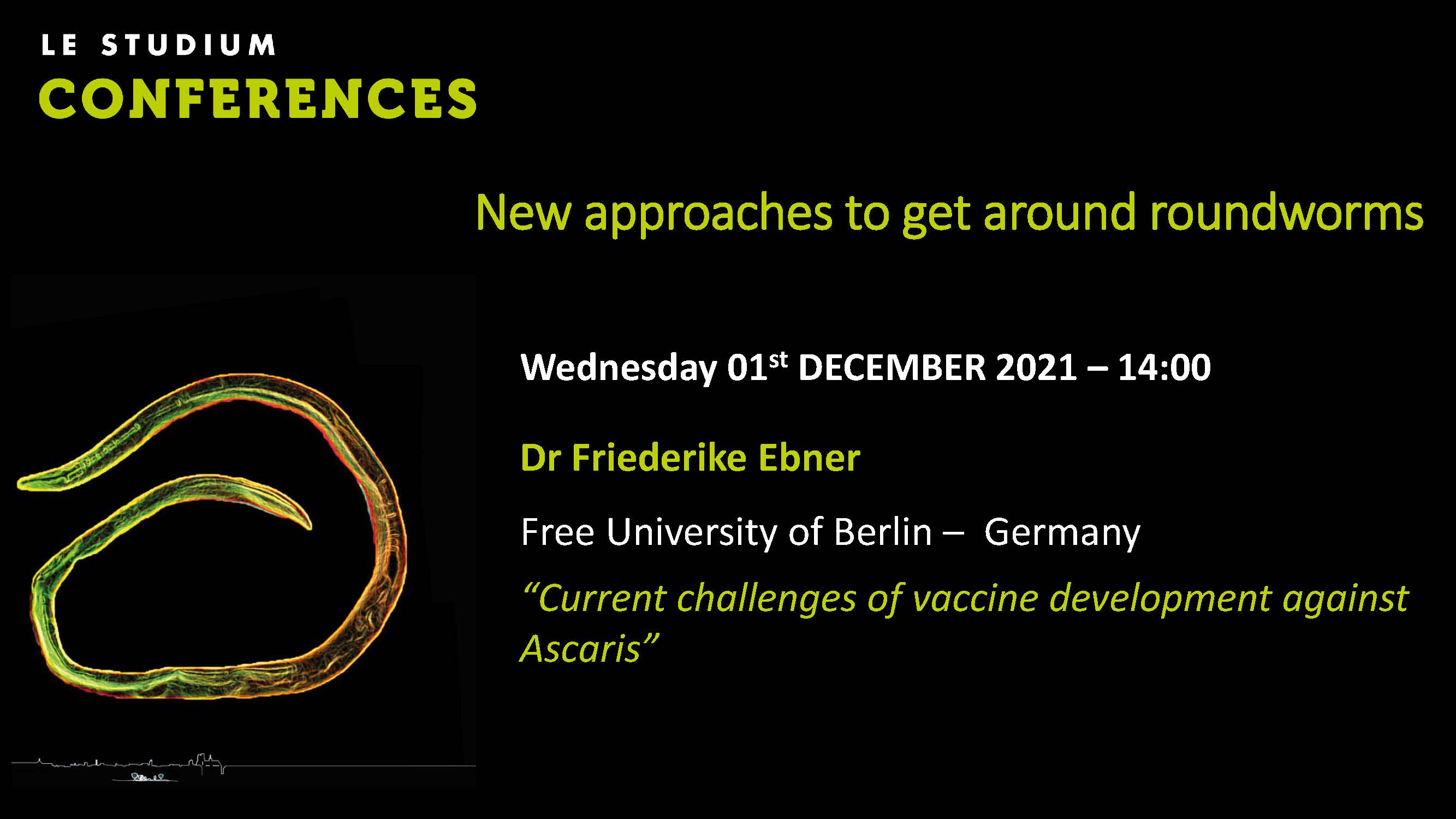Notice
Prof. Richard Martin - Calcium imaging in the intestine of Ascaris suum, TRP channels and diethylcarbamazine
- document 1 document 2 document 3
- niveau 1 niveau 2 niveau 3
Descriptif
Theintestine of nematode parasites is involved in more than digestion, absorptionand storage of nutrients. It is involved in vesicular trafficking, ageing,innate immunity, drug metabolism and excretion making it a sensitive tissue fordrugs to target. We used Fluo-3 AM, a calcium sensitive dye that is taken upinto the cytoplasm of the columnar cells of isolated Ascaris suum intestineflaps, to determine the effects of diethylcarbamazine. One of the possiblemodes of action of diethylcarbamazine is it is a TRP channel agonist. We usedPCR and detected the presence of TRP channel message in the Ascaris intestinestrips and found: Asu-gon-2, Asu-trp-1(2), Asu-ocr-1, and Asu-trpa-1.As a control we Increased calcium in the bathing solution to 10mM whichproduces a sharp and reversible rise in cytosolic calcium. 10 Mdiethylcarbamazine produced a characteristic ‘step-like’ slow increase incalcium that persisted after removal of diethylcarbamazine before returningslowly towards base levels. 2-APB, a TRP channel antagonist inhibited theeffect of 10 Mdiethylcarbamazine. Interestingly, in the absence of added calcium in thebathing solution, 10 Mdiethylcarbamazine produced a fall in cytosolic calcium as it was leached fromthe intestinal cells and 100 Mlanthanum, a TRP channel blocker, prevented this leaching. These observationssuggest a direct effect of diethylcarbamazine on TRP channels of Ascaris intestines,an effect that is not predicted by effects mediated by host immune systems oreffects on host arachidonic acid metabolism. The observations emphasize theintestine as a tissue that is sensitive to anthelmintic drugs.
Supportedby NIH R01AI047194and R01AI155413 to RJM and the EA Benbrook Foundation
Thème
Dans la même collection
-
Prof Lindy Holden-Dye - Ascaris physiology and pharmacology -what next? and how?
In this talk I will review the progress in providing insight into fundamental aspects of Ascaris physiology and pharmacology and the experimental approaches that have been adopted and developed to
-
Sara Roose - New insights into the use of serology as a diagnostic tool for Ascaris infections in h…
To monitor and evaluate mass drug administration (MDA) programs for soil-transmitted helminths (STHs) the diagnostic standard is the microscopic detection of STH specific eggs in stool smears (Kato-
-
Dr Paul Williams - Calcium imaging of Cry5B action on the intestine of Ascaris suum
Crystal (Cry) proteins from Bacillus thuringiensis are used as effective insecticides. These pore forming toxins act within the midgut of insects killing them. Cry5B, has been found to target and
-
Prof. Georg von Samson-Himmelstjern - Functional analysis of heterologous expression of Parascaris …
This presentation will provide an overview on recent investigations concerning the P-glycoprotein gene family in the equine roundworm Parascaris univalens. As prominent members of the ATP-Binding
-
Dr Andrea Springer - Modulation of the porcine intestinal microbiome and metabolome by Ascaris suum…
Ascaris suum affects feed conversion and weight gain of pigs, but effects on intestinal microbiota remain largely unexplored. Therefore, the intestinal microbiome and metabolome was assessed in pigs
-
Dr Jeba Jesudoss Chelladurai - P-glycoproteins of Toxocara canis: characterization of expression an…
The interaction of the macrocyclic lactones with P-glycoprotein have been well-characterized in different ascarids and have been implicated in drug resistance. While adult stages of the canine
-
Marie-Kristin Raulf - Binding of host C-type lectin receptors to Toxocara spp.-derived ligands – re…
Toxocara canis and Toxocara cati are worldwide-distributed zoonotic intestinal helminths with frequent exposure to humans in which they can cause severe disease pathology. Upon infection, initial
-
Ben Jones - Disentangling the role of Ascaris β-tubulin isotypes in the emergence of anthelmintic r…
Ascariasis affects nearly one billion people, predominantly in the developing world. Ascariasis also affects pigs globally and reduces production yields via decreased growth and condemnation of livers
-
-
Dr Peter Geldhof - Natural immunity against Ascaris – What lessons can be learned for vaccine devel…
Ascaris lumbricoides and A. suum are large roundworm parasites that thrives in the small intestine of humans and pigs, respectively. The control of ascariasis is currently completely reliant on
-
Dr Behdad Tarbiat -Allele frequency shift in the β-tubulin gene of Ascaridia galli in response to r…
Despite global spread of anthelmintic resistance in livestock, there has been little discussion about the development of AR in poultry. Ascaridia galli has become ubiquitous in layers due to the ban
-
Prof Erik Anderson - The current scope and future perspectives of Caenorhabditis elegans as a tool …
Ascarid parasites cause a massive burden on people in the developing world and on veterinary animals worldwide. We use a limited arsenal of anthelmintics to treat these infections. As the use of
Sur le même thème
-
Dr Andrea Springer - Modulation of the porcine intestinal microbiome and metabolome by Ascaris suum…
Ascaris suum affects feed conversion and weight gain of pigs, but effects on intestinal microbiota remain largely unexplored. Therefore, the intestinal microbiome and metabolome was assessed in pigs
-
Prof Lindy Holden-Dye - Ascaris physiology and pharmacology -what next? and how?
In this talk I will review the progress in providing insight into fundamental aspects of Ascaris physiology and pharmacology and the experimental approaches that have been adopted and developed to
-
Sara Roose - New insights into the use of serology as a diagnostic tool for Ascaris infections in h…
To monitor and evaluate mass drug administration (MDA) programs for soil-transmitted helminths (STHs) the diagnostic standard is the microscopic detection of STH specific eggs in stool smears (Kato-
-
Prof. Adrian Wolstenholme - C. elegans as a model for ascarid parasites; levamisole receptors
Ligand-gated ion channels provide an excellent test for any expression system and for C. elegans as a model for parasitic nematode species, including the ascarids. They are complex proteins made of
-
Dr JB Collins - Lack of canonical beta-tubulin resistance alleles in two benzimidazole-resistant as…
Management of nematode parasites of veterinary importance has become complicated because of the development of anthelmintic resistance. Resistance to benzimidazoles (BZ) is the most well characterized
-
Dr Peter Geldhof - Natural immunity against Ascaris – What lessons can be learned for vaccine devel…
Ascaris lumbricoides and A. suum are large roundworm parasites that thrives in the small intestine of humans and pigs, respectively. The control of ascariasis is currently completely reliant on
-
-
Frida Martin - Exploring the β-tubulin gene family in a benzimidazole-resistant Parascaris univalen…
Benzimidazole (BZ) resistance is rare in ascarids in contrast to strongyle parasites where this resistance is widespread. In strongyles, single nucleotide polymorphisms (SNPs) at codons 167, 198 and
-
Prof Erik Anderson - The current scope and future perspectives of Caenorhabditis elegans as a tool …
Ascarid parasites cause a massive burden on people in the developing world and on veterinary animals worldwide. We use a limited arsenal of anthelmintics to treat these infections. As the use of
-
Dr Francisco Evangelista - A bioinformatics approach to the discovery of vaccination targets in Asc…
Background: Ascariasis remains the most prevalent zoonotic helminthic disease affecting both humans and pigs and preventive chemotherapy continues to be the most widespread control method.
-
Dr Behdad Tarbiat -Allele frequency shift in the β-tubulin gene of Ascaridia galli in response to r…
Despite global spread of anthelmintic resistance in livestock, there has been little discussion about the development of AR in poultry. Ascaridia galli has become ubiquitous in layers due to the ban
-
Dr Friederike Ebner - Current challenges of vaccine development against Ascaris
For more than half a century, scientists have been looking for prevention strategies against Ascarids, however, we still lack fully effective vaccines to protect both humans and veterinary species.

